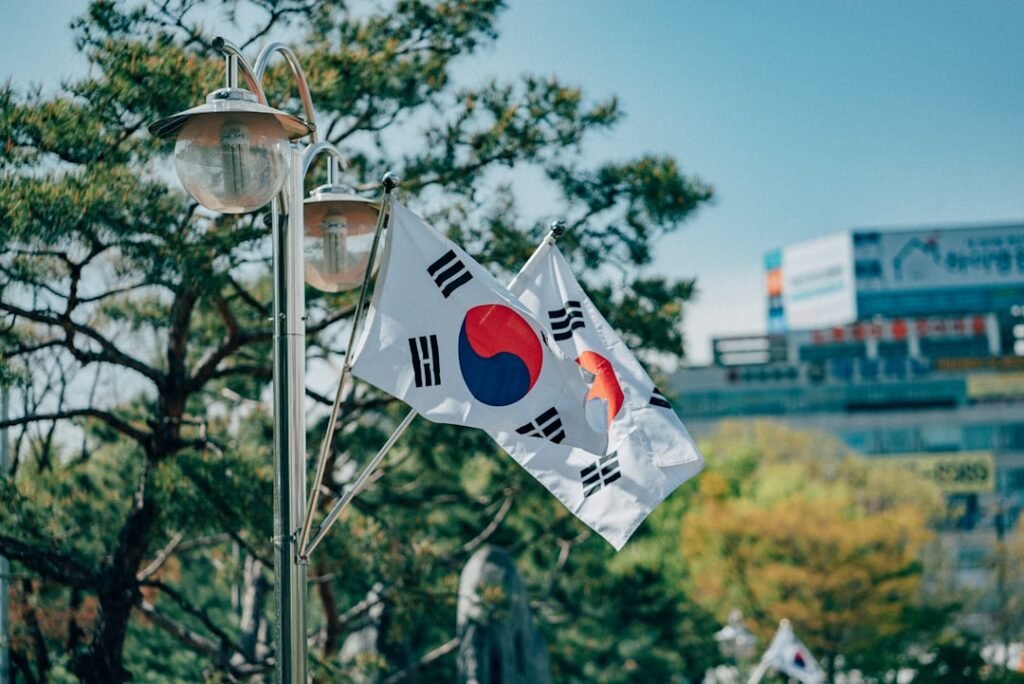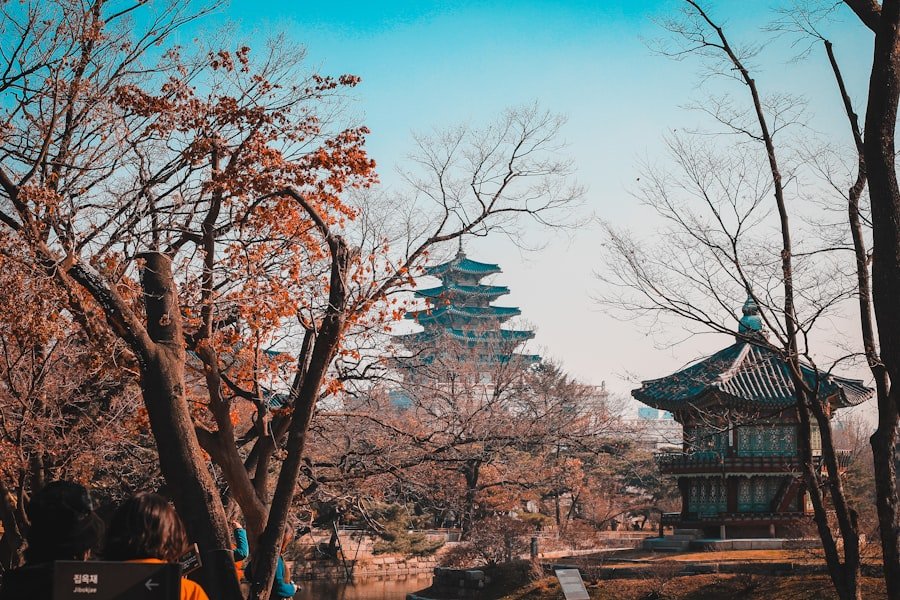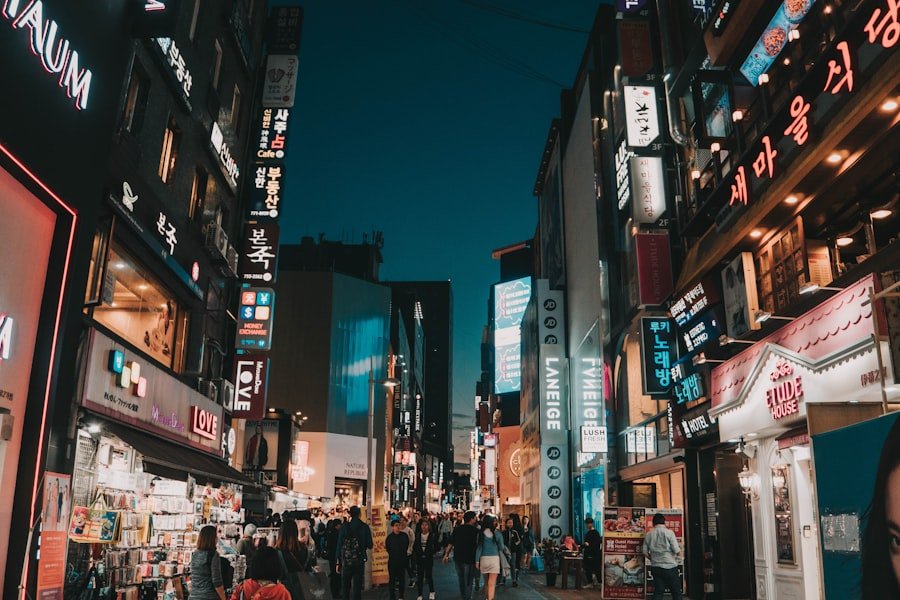

Korean Phrases for Every Season: From Winter to Summer
Korea is a land of striking contrasts, where the beauty of nature unfolds dramatically with each passing season. The four distinct seasons—winter, spring, summer, and autumn—each bring their own unique charm and cultural significance. From the snow-covered landscapes of winter to the vibrant blossoms of spring, the sultry heat of summer, and the rich hues of autumn, Korea’s seasonal changes are not just a backdrop but an integral part of its cultural identity.
Understanding these seasons is essential for anyone looking to immerse themselves in Korean culture, as they influence everything from traditional festivals to culinary delights. The changing seasons also provide a rich tapestry of vocabulary and expressions in the Korean language. Each season has its own set of phrases that reflect the feelings and activities associated with that time of year.
Learning these expressions not only enhances one’s language skills but also deepens one’s appreciation for the cultural nuances embedded in the language. As we delve into the essential phrases and vocabulary for each season, we will also explore how these elements intertwine with traditional holidays, seasonal activities, and the culinary landscape of Korea. Learn Korean in Oslo! NLS Norwegian Language School is now offering classes. Register today.
Table of Contents
ToggleSummary
- Korean seasons are divided into four distinct periods: winter, spring, summer, and autumn, each with its own unique characteristics and cultural significance.
- Essential winter phrases in Korean include greetings like “추운 날씨네요” (It’s cold) and “따뜻하게 입으세요” (Dress warmly).
- Springtime expressions in Korean revolve around the beauty of nature, with phrases like “꽃이 피었어요” (The flowers have bloomed) and “따뜻한 봄 날씨” (Warm spring weather).
- Summer vocabulary in Korean includes words like “더위” (heatwave) and “수영장” (swimming pool) to describe the hot and humid season.
- Autumnal sayings in Korean often focus on the changing colours of the leaves, with phrases like “단풍이 예쁘네요” (The autumn leaves are beautiful) and “가을 햇살” (Autumn sunshine).
Essential Winter Phrases in Korean
Winter in Korea is a time of cold weather, snow, and festive celebrations. The chill in the air brings about a unique set of phrases that capture the essence of this season. For instance, “눈이 와요” (nun-i wayo) translates to “It is snowing,” a phrase that evokes images of serene landscapes blanketed in white.
Another common expression is “춥다” (chupda), meaning “It is cold,” which is often used to describe the biting temperatures that characterise Korean winters. These phrases are not only practical for everyday conversations but also serve as a gateway to discussing winter activities and traditions. In addition to basic weather-related phrases, winter in Korea is synonymous with various cultural practices.
For example, “설날” (Seollal), or Lunar New Year, is a significant holiday celebrated during this season. It is customary to greet others with “새해 복 많이 받으세요” (saehae bok mani badeuseyo), meaning “Wishing you a lot of luck in the New Year.” This phrase encapsulates the spirit of renewal and hope that accompanies the arrival of a new year. By mastering these winter phrases, learners can engage more meaningfully with Koreans during this festive time.
Springtime Expressions in Korean

As winter gives way to spring, Korea bursts into life with vibrant colours and fragrant blossoms. The arrival of spring is celebrated with a plethora of expressions that reflect the joy and renewal associated with this season. One popular phrase is “꽃이 피어요” (kkot-i pi-eoyo), which means “Flowers are blooming.” This expression captures the essence of spring as cherry blossoms and other flowers begin to adorn the landscape, drawing both locals and tourists alike to parks and gardens.
Spring is also a time for new beginnings, making it an ideal moment for personal reflection and growth. The phrase “새로운 시작” (saeroun sijak), meaning “new beginning,” resonates deeply during this season. It is often used in conversations about personal goals or aspirations as people emerge from the hibernation of winter.
Additionally, spring festivals such as “벚꽃 축제” (beotkkot chukje), or Cherry Blossom Festival, provide opportunities for social gatherings and celebrations, making it essential for learners to familiarise themselves with these expressions to fully engage in the seasonal festivities.
Summer Vocabulary in Korean
Summer in Korea is characterised by hot weather and vibrant outdoor activities. The heat brings about a different set of vocabulary that reflects both the climate and the lifestyle during this season. A common phrase is “더워요” (deowoyo), meaning “It is hot,” which is frequently used as people seek relief from the sweltering temperatures.
Another useful expression is “해수욕장에 가요” (haesuyokjang-e gayo), translating to “I am going to the beach,” highlighting one of the most popular summer pastimes in Korea. Summer also brings with it a variety of traditional foods that are enjoyed during this season. Phrases like “냉면 먹고 싶어요” (naengmyeon meokgo sipeoyo), meaning “I want to eat cold noodles,” are essential for discussing seasonal delicacies.
Cold noodles are a staple summer dish that provides relief from the heat, making it a must-try for anyone visiting Korea during this time. By learning summer vocabulary, language learners can better navigate conversations about seasonal activities and culinary experiences.
Autumnal Sayings in Korean
As summer fades into autumn, Korea transforms into a canvas of warm hues—golden yellows, fiery reds, and deep oranges dominate the landscape. Autumn is often associated with harvest time and reflection, leading to a unique set of expressions that capture its essence. One common phrase is “단풍이 들어요” (danpung-i deureoyo), which means “The leaves are changing colour.” This expression perfectly encapsulates the beauty of autumn foliage that attracts many visitors to scenic spots across the country.
Autumn is also a time for traditional harvest festivals such as “추석” (Chuseok), which celebrates the fall harvest and pays homage to ancestors. During this holiday, families gather to share food and express gratitude for the bountiful harvest. A popular greeting during this time is “추석 잘 보내세요” (Chuseok jal bonaeseyo), meaning “Have a good Chuseok.” By learning these autumnal sayings, language learners can engage more deeply with Korean culture and participate in seasonal celebrations.
Traditional Korean Holidays and Festivals

Korean culture is rich with traditional holidays and festivals that are intricately tied to the seasons. Each holiday not only marks a specific time of year but also embodies cultural values and practices that have been passed down through generations. For instance, Seollal (Lunar New Year) in winter is a time for family reunions, ancestral rites, and traditional games.
Similarly, Chuseok (Harvest Festival) in autumn celebrates gratitude for the harvest and family bonds through shared meals and rituals. Spring brings about festivals such as the Cherry Blossom Festival, where people gather to admire blooming flowers while enjoying picnics under the trees. Summer is marked by various water festivals that celebrate the joy of cooling off during hot days.
Each festival offers unique experiences that reflect Korea’s cultural heritage, making it essential for language learners to understand their significance and associated vocabulary.
How to Talk about Weather in Korean
Discussing the weather is an integral part of daily conversations in any culture, and Korea is no exception. The Korean language offers a variety of expressions to describe different weather conditions throughout the seasons. For example, one might say “비가 와요” (biga wayo) to indicate “It is raining,” or “맑아요” (malgayo) to express that “It is clear.” These phrases are not only useful for practical communication but also serve as conversation starters when engaging with locals.
Understanding how to talk about weather can also enhance one’s experience while travelling in Korea. Weather conditions often dictate seasonal activities; thus, being able to discuss them can lead to more meaningful interactions. For instance, asking about upcoming weather forecasts can help plan outings or events during one’s stay in Korea.
By mastering these weather-related phrases, learners can navigate conversations more confidently while immersing themselves in Korean culture.
Seasonal Activities and Hobbies in Korea
Each season in Korea offers a plethora of activities and hobbies that reflect the unique characteristics of that time of year. In winter, activities such as skiing and ice skating become popular as people flock to ski resorts and ice rinks across the country. Phrases like “스키 타러 가요” (seuki tareo gayo), meaning “I am going skiing,” become relevant as individuals plan their winter adventures.
Springtime invites outdoor activities such as hiking and picnicking under cherry blossom trees. The phrase “벚꽃 구경 가요” (beotkkot gugyeong gayo), meaning “I am going to see cherry blossoms,” captures the essence of this seasonal pastime. Summer brings beach outings and water sports, while autumn encourages hiking trips to enjoy the stunning foliage.
Each season presents its own set of hobbies that not only enrich personal experiences but also foster connections with others who share similar interests.
Food and Drinks for Every Season in Korea
Korean cuisine is deeply influenced by seasonal ingredients and traditions, making food an essential aspect of each season’s cultural experience. In winter, hearty dishes like “김치찌개” (kimchi jjigae) or spicy kimchi stew provide warmth against the cold weather. Phrases like “뜨거운 국물 먹고 싶어요” (tteugeoun gukmul meokgo sipeoyo), meaning “I want to eat hot soup,” resonate well during this time.
Spring introduces lighter fare such as fresh vegetables and spring rolls, while summer calls for refreshing dishes like “냉면” (naengmyeon) or cold noodles that help combat the heat. Autumn brings an abundance of harvest foods like chestnuts and sweet potatoes, leading to phrases like “밤 먹고 싶어요” (bam meokgo sipeoyo), meaning “I want to eat chestnuts.” Understanding seasonal foods enhances one’s culinary experience while exploring Korean culture.
Cultural Significance of Each Season in Korea
The cultural significance of each season in Korea extends beyond mere weather changes; it encompasses traditions, values, and communal practices that shape societal norms. Winter represents introspection and family bonding during holidays like Seollal, while spring embodies renewal and hope through nature’s rebirth. Summer signifies vitality and leisure as people engage in outdoor activities, while autumn reflects gratitude for harvests and familial connections during Chuseok.
These seasonal transitions are celebrated through various customs, rituals, and festivals that highlight Korea’s rich cultural heritage. By understanding the cultural significance behind each season, language learners can appreciate not only the language but also the values that underpin Korean society.
Tips for Learning and Using Korean Phrases for Every Season
Learning Korean phrases related to each season can be an enriching experience that enhances both language skills and cultural understanding. One effective tip is to immerse oneself in seasonal activities—attending festivals or trying seasonal foods can provide context for new vocabulary. Engaging with native speakers during these times can also offer practical opportunities to practice conversational skills.
Additionally, creating flashcards or using language apps focused on seasonal vocabulary can aid retention. Regularly revisiting these phrases throughout their respective seasons will reinforce learning while keeping one connected to Korean culture. Finally, enrolling in courses at institutions like NLS Norwegian Language School in Oslo can provide structured learning environments where students can explore seasonal vocabulary alongside experienced instructors who understand the nuances of Korean culture.
At NLS Norwegian Language School, students have access to comprehensive Korean courses designed to enhance their language skills while immersing them in cultural contexts related to each season. Whether you are a beginner or looking to refine your skills, NLS offers tailored programmes that cater to various learning needs—making it an ideal place for anyone eager to delve into the beauty of the Korean language and its rich seasonal traditions.
If you want to learn Norwegian, you can register for classes here. We look forward to hearing from you and helping you become fluent in Norwegian.





